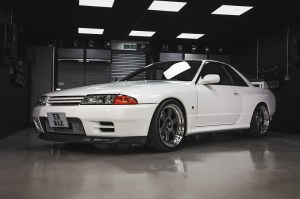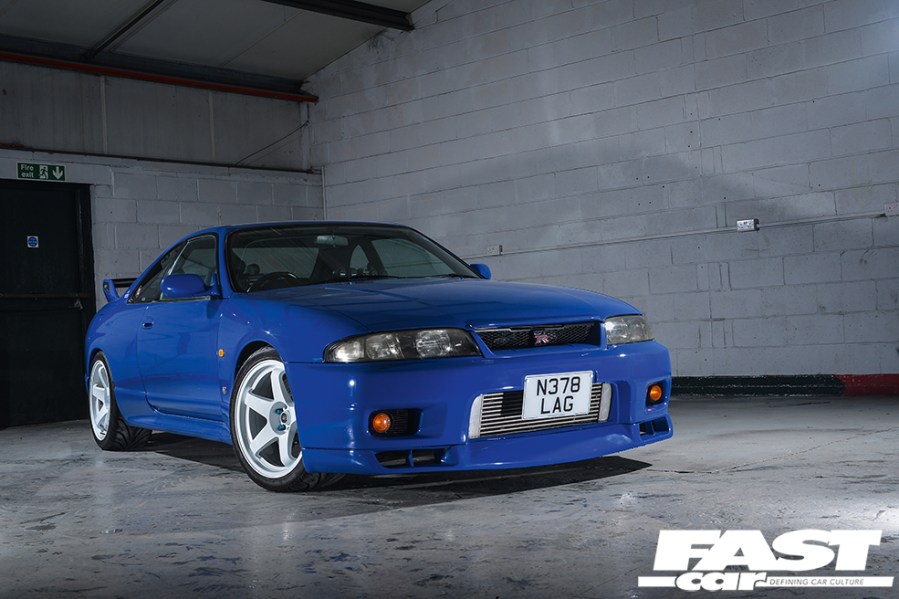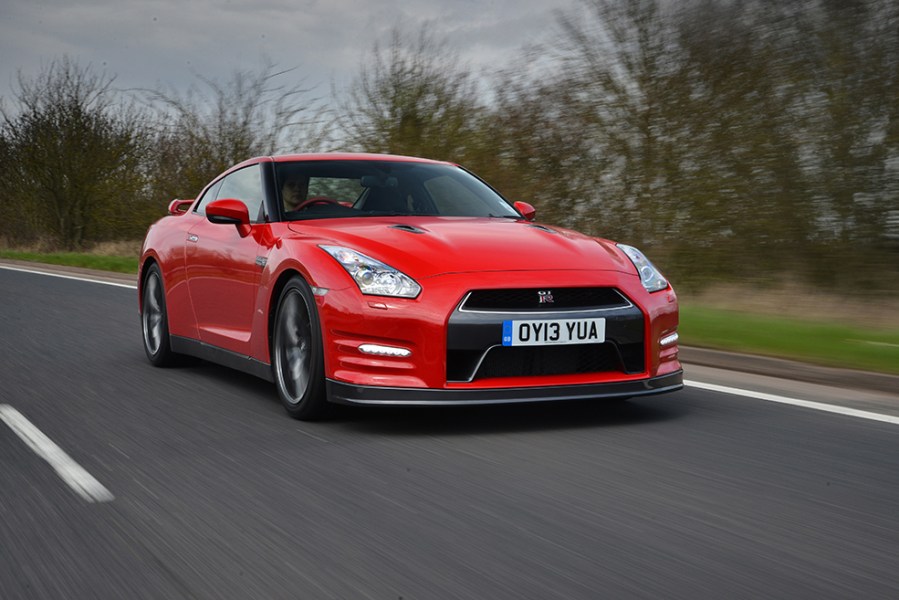In this Nissan GT-R buyer’s guide, we take a look at the main things you need to look out for when purchasing one of these Japanese motoring icons.
Known for their clever all-wheel drive systems and highly tunable engines, they’re one of the most popular vehicles to modify, and for good reason. Each iteration of the Nissan Skyline GT-R can claim to be one of the best performance cars to come out of Japan, whether you leave it stock, or not.
Of course, over the years, plenty about the model has changed. The 1989 R32-gen car picked up where its Hakosuka and Kenmeri ancestors left off, offering sports car levels of performance in a package derived from a humble sedan. Nowadays though, that sedan DNA is firmly a thing of the past; the R35 GT-R being its own stand-alone supercar rival.
Whichever iteration of GT-R takes your fancy, this guide should give you a good idea about what to look out for when trawling through the classifieds. So, if you’ve got a project car-sized amount of cash to burn, keep reading to find out which generation is right for you.
Nissan Skyline GT-R R32 Buyer’s Guide

When it was launched, the R32 GT-R looked a decade apart from the outgoing sporty version of the R31, and underneath its attractive exterior, the car was packed full of technical innovations too. The ATESSA-ETS all-wheel drive system is one of the car’s most famous party tricks, while a system known as Super HICAS gave the R32 some rear-wheel steering capabilities too. Though, admittedly, not every driver likes the way that HICAS feels on the limit. Then, of course, there was the RB26 inline-six under the hood – an engine designed to withstand the pressures of Group A racing, turned down a notch for the street.
All in all, what Nissan ended up with was a sports coupe with enough grip and grunt to run circles around its competitors on the circuit, earning it the fabled ‘Godzilla’ nickname. In roadgoing guise, the R32 GT-R will have embarrassed plenty of Porsche drivers on Japan’s twisty mountain roads, I’m sure.
If you want to get your hands on one of these beasts from the east, you’ll need a sizeable chunk of cash. Prices in the UK start at around £35,000, and stretch up to £50,000 for lower mileage examples. That said, special tuning shop variations can fetch closer to £85,000, while the most sough-after garage queens can cost you six figures. Stateside, it’s a similar story. Our American readers should look to pay between $45,000 – $60,000 for one, depending on mileage, condition and modification status.
For more detailed buying advice, check out our Nissan Skyline GT-R R32 buyer’s guide. If you’re looking to modify one, check out our Nissan Skyline GT-R R32 tuning guide.
Pros of the Nissan Skyline GT-R R32
- Highly capable RB26 motor
- ATESSA-ETS all-wheel drive
- Now legal to import to the US
Cons
- Potential for rust
- Cheap interior
- Lots of modified examples to be cautious of
Common Problems
- Oil pump failure
- Stock turbo failure
- Faulty HICAS system
Nissan Skyline GT-R R33 Buyer’s Guide

The poor old R33 variant of the Nissan Skyline GT-R gets a pretty tough time in the tuner sphere, but that shouldn’t put you off of what is ultimately still a very impressive car.
The main issue that people take with the R33 is that, compared to the R32, it has a longer wheelbase, and therefore doesn’t feel quite as poised on a spirited drive. It’s 80kg heavier too, so while the R33 is undeniably quick, it’s perhaps better suited to those of you who prefer to cruise or eat up motorway miles, rather than tear around a track.
That said, you can certainly turn it into a serious circuit weapon if you wish, thanks to the vast performance aftermarket that caters to these cars. After all, in its standard guise, the R33 boasts more torque than the R32, and better aero. It’s just let down a bit by its proportions.
These days, it appears as though the market has begun to see through the amplified negative discourse around the car, as prices seem to be on the rise. Until recently, the R33 was arguably more affordable than the R32, however that’s no longer true. In the US, you’re looking at starting prices of around $45,000, but the average figure is closer to $65,000. The most desirable, rarest examples are now well into six-figure territory. In the UK, £50,000-£60,000 is the sort of money that an average car would dictate.
For more detailed buying advice, check out our Nissan Skyline GT-R R33 buyer’s guide. If you’re looking to modify one, check out our Nissan Skyline GT-R R33 tuning guide.
Pros of the Nissan Skyline GT-R R33
- More torque than an R32
- Enhanced ATESSA-ETS all-wheel drive compared to R32
- Now legal to import to the US.
Cons
- Potential for rust
- Considered big & bulky compared to R32 & R34
- Cheap interior
Common Problems
- Knocking sound from the rear differential
- Leaky steering rack seals
- Worn track rod ends
Nissan Skyline GT-R R34 Buyer’s Guide

When you say the words, ‘Nissan Skyline GT-R’, the R34 is often the version that pops into people’s minds. Seemingly ever-present in modified car pop culture, the R34 is effectively the perfect mash-up of both the R32 and R33.
Size-wise, its profile much more closely resembles that of the R32, while technologically-speaking the R34 is as advanced as the R33 – in fact, it’s even more advanced. For example, the R34 makes use of a ball bearing turbo design for better reliability and decreased spool time. It has bigger brakes too, and even sprouted a sixth gear.
This combination of genuine performance credentials and prominent cultural standing means that if you want an R34 GT-R, you’re going to need very deep pockets indeed. In 2023, original R34 GT-Rs don’t sell for less than $/£100,000, assuming they’re in working order. In fact, the market is so variable depending on anything from mileage, to color, to spec, that you could be looking at prices anywhere between $/£125,000-$/£180,000. It’s certainly not unheard of for the $/£200,000 barrier to be breached in special cases, while the rarest, most legendary specifications are getting perilously close to half a million. Technically, the R34 GT-R still isn’t quite legal to import to the US (although the earliest 1998 examples will be), yet that’s not to say you won’t see any there. Again, expect similarly ludicrous prices.
For more detailed buying advice, check out our Nissan Skyline GT-R R34 buyer’s guide. If you’re looking to modify one, check out our Nissan Skyline GT-R R34 tuning guide.
Pros of the Nissan Skyline GT-R R34
- Most desirable iteration of GT-R
- Most advanced standard iteration of the RB26 motor
- Six manual gears rather than five.
Cons
- Potential for rust
- Prices for these have boomed
- There are several dressed-up GTTs floating around – don’t get caught out!
Common Problems
- Fried coil packs & split vacuum lines
- Popping out of gear (especially in first)
- Faulty LCD display
Nissan GT-R R35 Buyer’s Guide

The R35 brought plenty of changes with it. For one, the GT-R badge now had nothing to do with Nissan’s Skyline sedan. Instead, the R35 was its own ground-up design, described by Nissan as though it was some sort of lab-engineered superhero. And to be fair to them, given the R35’s capabilities, it’s not like they were overblowing it.
You name it, Nissan will have changed it since the R34 went out of production – and that even includes iconic features such as the RB26 engine and ATESSA all-wheel drive. Instead, the world received a car with an even more sophisticated chassis & drivetrain, and even more potent engine – a twin-turbo V6 known as the VR38.
Over the course of it’s near-two-decade production span, there has been plenty of tweaks and adjustments made to the R35 package, though the core supercar-killing character remains. To learn more about the fine nuances between model years of R35, we’d highly recommend that you give our dedicated Nissan GT-R R35 buyer’s guide a read.
Pricing for the Nissan GT-R R35
As far as prices go, well, the market for this car is just as wide-ranging as its spec sheet over the years. Early high mileage cars cost around $60,000, while low-mileage, newer cars sell for R34-rivalling prices; up to around $140,000 for something fairly close to standard, or nearer $190,000 for super-modified 1000PS beasts. Of course, there are still new and nearly-new examples up for sale in the US as well, while a facelift model is due in 2024. At the moment, fresh ’23 plate GT-Rs have a starting MSRP of $113,000, though with the current state of dealer mark-ups, don’t be surprised to see them sell for much higher figures in reality.
Over in the UK, the R35 is no longer on sale, so you’ll be restricted to the second-hand market. Happily though, prices are a little more down to earth. Entry-level examples can be picked up for £35,000, though the market does stretch up to and beyond £100,000 the newer and rarer you go. Recently, one of the UK’s most powerful R35 GT-Rs went up for sale for almost £200,000, though this featured an engine capable of almost 2,500bhp. With said car completing the quarter-mile in 7ish seconds with a trap speed of near-as-dammit 180mph.
If after that initial outlay you’ve still got enough spare change to modify your GT-R, be sure to check out our R35 tuning guide as well!
Pros of the Nissan GT-R R35
- Supercar levels of performance
- All the GT-R fun with added modern interior tech and design
- Widely available around the world
Cons
- Supercar speed means near-supercar prices
- Very sensitive to alignment & geometry
- Factory paintwork is weak
Common Problems
- Noisy rear differential
- Transmission damage from launch control abuse
- Cracked rotors/discs from lead-footed brakers.
Further Reading
Looking for more GT-R content & advice? Check these out:
The post Nissan GT-R Buyer’s Guide appeared first on Fast Car.
Leia Mais.